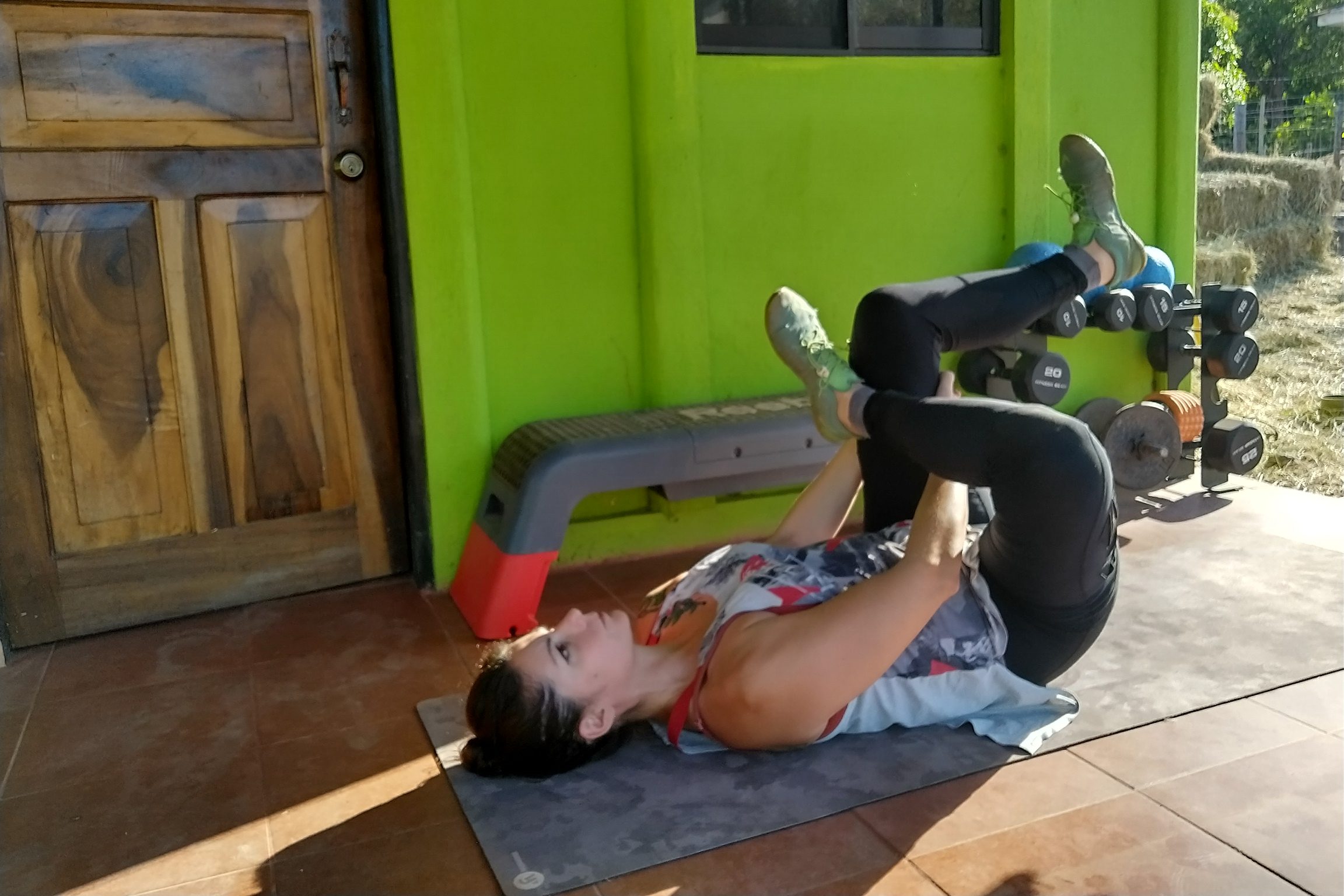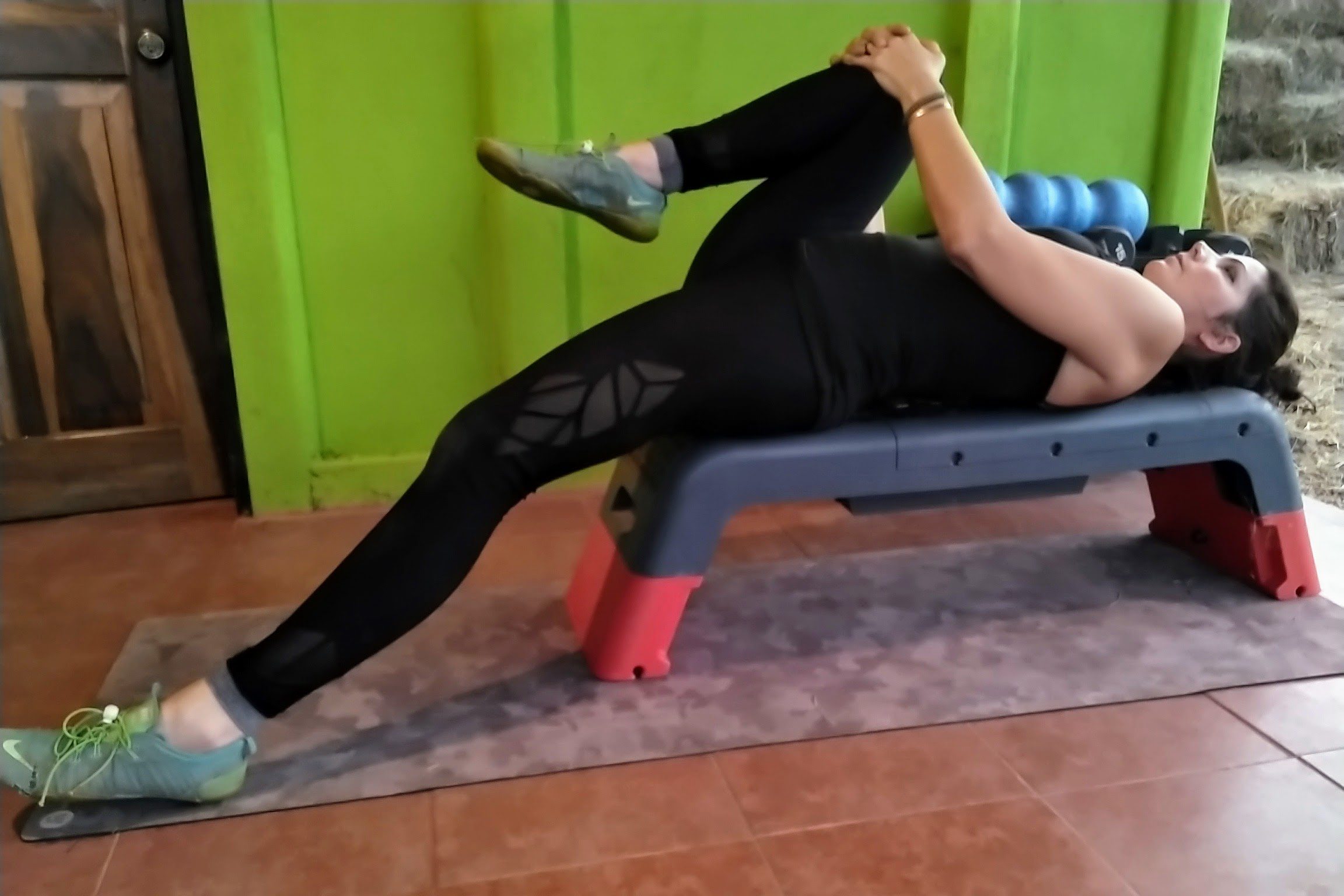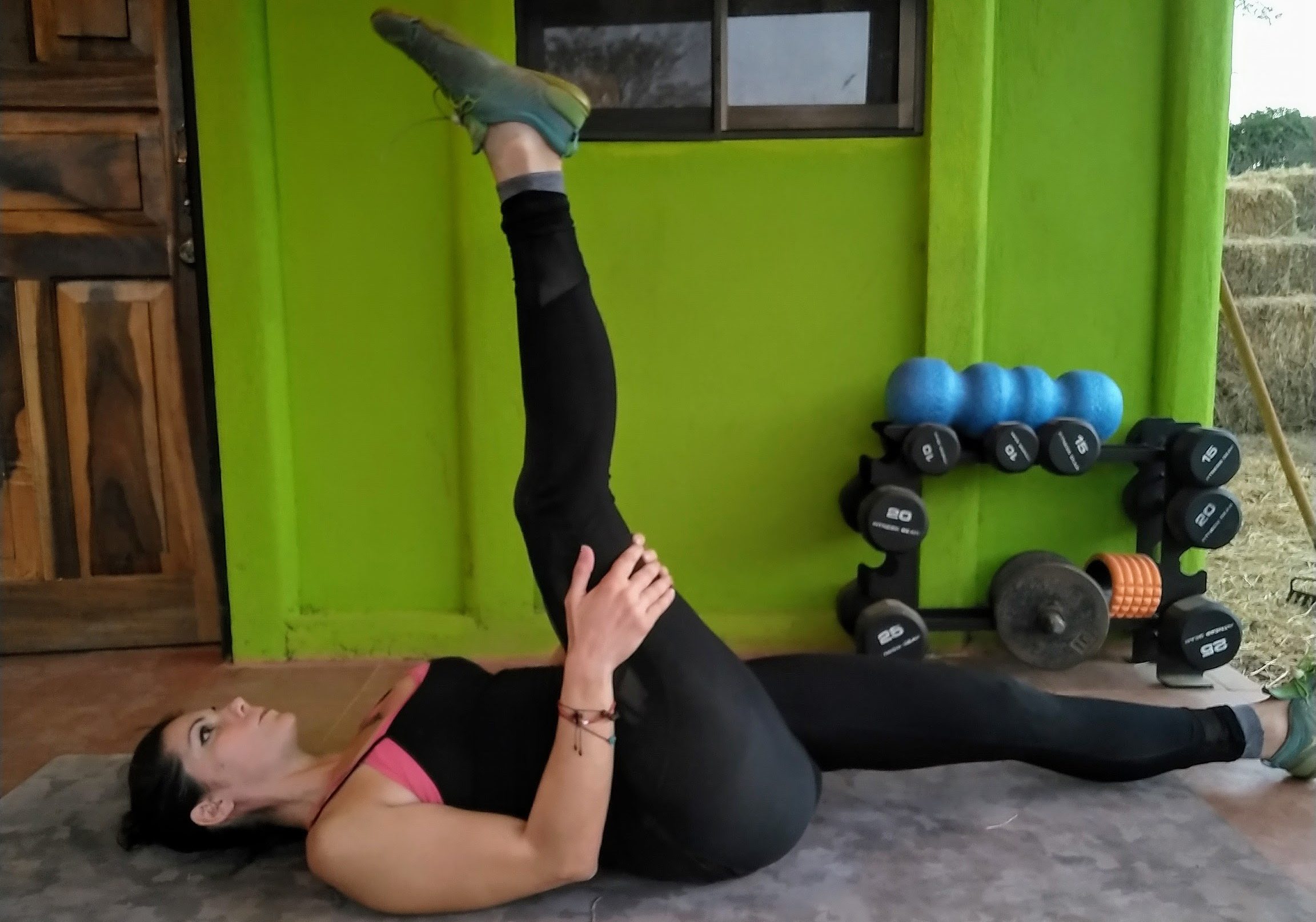3 Best Stretches for Sciatica Pain Relief
Updated: Jun. 01, 2021
Sciatica can be brought on by several causes. Ease the shooting pain and get active with these simple yet effective sciatica stretches.
Sciatica explained
If you’ve ever felt intense pain radiating from your lower back, through your glutes and hips, and down one (or sometimes both) legs, you might have experienced sciatica.
Thankfully, the excruciating chronic pain isn’t necessarily a life sentence. Sciatica may come on strong and then seemingly resolve itself in a few weeks without extensive intervention. Unfortunately, when you do have it, it can be torturous, and you may have several bouts of it over the course of your life.
Sciatica is one of the most common types of pain, with up to 40 percent of U.S. adults experiencing it over the course of their lifetimes. So if you’ve been feeling intense shooting or radiating pain, here’s what you need to know.
Symptoms of sciatica
Sciatica is a form of nerve pain—hence the pain that can sometimes feel like an electric shock.
“Sciatica is irritation of the sciatic nerve, which is the main nerve that runs along the back of your legs,” says Lauren Lobert, a physical therapist, certified strength and conditioning specialist, and owner of Apex Physical Therapy in Brighton, Michigan. “It’s usually caused by something that is compressing it or was compressing it, such as a bone [arthritis], tight muscle, the nerve being restricted or tight, or a disc.”
And the thing is, even if the cause of the nerve restriction is resolved—for instance, if a tight muscle was compressing the nerve but it loosens up—the pain can continue for a period because the nerve remains irritated. But the fact that sciatica can often be resolved without major intervention should prompt a sigh of relief, even if you’re grimacing in pain.
(Learn more about common sciatica symptoms.)
Common causes of sciatica
Most causes of sciatica aren’t due to major injury to the spine, although that can certainly happen. Rather, years of accumulated sedentary activity and daily tasks performed with poor posture can lead to such pain.
These ingrained daily habits contribute to muscle imbalances and weakened supportive structures, which can lead to herniated discs or weak or slipped vertebrae that end up compressing the sciatic nerve.
Finding sciatica pain relief
Good posture and a regular exercise program are so important when it comes to reducing your risk for sciatica and addressing causes of pain.
“Having a strong core is crucial if you want to help ease the pain,” says physical therapist Preston Brown, owner of Prestige Therapy and Wellness in Milwaukee. “Try to exercise daily for 30 minutes—walk, ride a bike, or take a yoga class. Activity helps to increase blood flow and improve your mobility and strength.”
And make sure you’re focusing on good posture during all of your day-to-day activities. “When you’re washing dishes, brushing your teeth, or vacuuming, make sure you’re standing up straight with your earlobes directly above your shoulders and hips,” says Brown.
Pay close attention to your posture and work setup if you’re in an industry where you sit most of the day. “You should be sitting up straight in your chair so your back is supported. Your hips should be slightly higher than your knees and your feet should be solid on the floor,” Brown adds.
(Here are some surprising reasons for back pain.)
How stretching helps
Maintaining proper mobility through your spine, hips, and legs can help with preventing and reducing sciatic nerve-related pain. It’s important to understand that stretching for the sake of maximizing flexibility isn’t really the goal. You don’t have to be able to do a backbend or a split to enjoy the pain-relief benefits of stretching (and if you’re overstretching, you might actually experience more pain). Rather, the goal is to maintain a normal range of motion and mobility.
(These are the everyday habits damaging your spine.)
For instance, Lobert points out that a tight piriformis muscle can compress the sciatic nerve, leading to pain. The piriformis is a small, band-like muscle located in your buttocks, close to the top of your hip. It helps with stabilization of the sacroiliac joint (located where your pelvis and lower spine connect), external rotation of the leg, and abducting your leg (moving it away from your midline) when your hip is flexed.
By addressing tightness through the piriformis with piriformis-focused stretches, you may be able to regain normal mobility of the piriformis muscle, reduce the compression of the sciatic nerve, and ultimately reduce or eliminate your pain.
When to seek medical care
Of course, severe pain that is interfering with your day-to-day life or that is accompanied by specific symptoms, should always be checked out by a doctor. If you have ongoing pain that doesn’t receive treatment, you could end up with permanent nerve damage—something it’s definitely best to avoid.
If your sciatica is associated with numbness or weakness in the affected leg or loss of bowel or bladder control, you need to seek medical care immediately. In these cases, surgery may be required to prevent further damage or pain.
(These are the signs your back pain is an emergency.)
Best stretches for sciatica
If your sciatic nerve pain isn’t causing the type of life interruption that deserves immediate medical attention, you may be able to find some relief by performing the following stretches, suggested by Lobert and Brown to help loosen up the low back and hips. These are areas where tight muscles often contribute to sciatic nerve compression.

Piriformis supine figure 4 stretch
The piriformis muscle is small, so it’s easy to overlook it when it comes to general stretching routines.
How to do it
To perform the piriformis stretch (also called the figure 4 stretch), lie on your mat on your back with your knees bent, feet flat on the floor. Cross your right ankle over your left knee, allowing your right knee to open outward, as if creating a “4.” Place both hands behind your left thigh.
Lift your left foot from the ground, bringing your left shin to a parallel position with the floor. Using your hands, pull your left thigh closer to your torso until you feel a stretch in your butt on your right side. Hold for 10 to 15 seconds, release for a breath, then perform four to six more times for a total of a minute before switching sides.
(Here are the best stretches for lower back pain.)

Lying hip flexor stretch
Your hip flexors do exactly what they say they’ll do: help flex your hips. When the hip flexors are tight, you may have less mobility through your hips, and weakness in your core and glutes, all of which can contribute to sciatica.
How to do it
Lie on an elevated surface, like a bench or a bed, so your right thigh is supported by the bench. Your knee should be bent, with your lower leg hanging off the side of the bench. Even with this position, you might feel a slight stretch on the front of your right hip. Bend your left knee, with your left foot flat on the bench.
Lift your left foot from the bench and grasp your left knee with both hands before gently pulling your left knee toward your chest. Stop when you feel a gentle stretch at the front of your right hip. Hold for 30 seconds, release for a breath, then repeat two to three times before switching sides.
(Try these stretches for hip pain.)

Lying hamstring stretch
If you have sciatica nerve pain, stretching your hamstrings—the muscle at the back of your thigh—can provide relief. These stretches can be done anywhere and performed in a variety of ways. Here’s one of the best hamstring stretches to try.
How to do it
Lie on your back on a mat with your left leg straight, your right knee bent, and your right foot flat on the floor. Lift your right foot from the mat and use both hands to grab the back of your right thigh. Draw your knee slightly closer to your torso (your right thigh should be roughly perpendicular to the mat).
From this position, slowly straighten your right leg, stopping when you feel a stretch at the back of your right thigh. Focus on keeping your low back in contact with the floor as you hold the stretch. Hold for 30 to 60 seconds, release for a breath, then repeat two to three times before switching sides.
Next, got pain on the inside of the knee? Try these quick-fix tips.





















